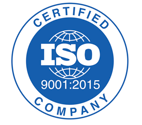On April 25, 2024, the European Commission issued a press release announcing that additional time will be granted to companies to transition to the new requirements under the In Vitro Diagnostic Medical Device Regulation (IVD Regulation). In vitro diagnostics (IVD’s) are tests used on biological samples to determine the status of a person's health, such as HIV tests, pregnancy tests or COVID-19 tests. As a reminder, the IVD Regulation entered into force in May 2017 and has been applicable since May 2022. It was adopted together with the Medical Device Regulation (EU MDR) that has been applicable since May 2021.
The extended transition time for the IVD Regulation will protect the availability of IVD’s for patients and providers as many such products currently on the market do not yet comply with the IVD Regulation.
The additional time granted is dependent on the following criteria:
- High individual and public health risk devices such as HIV or hepatitis tests (class D) will have a transition period until December 2027;
- High individual and/or moderate public health risk devices such as cancer tests (class C) will have a transition period until December 2028;
- Lower risk devices (class B) such as pregnancy tests and (class A) sterile devices such as blood collection tubes have a transition period until December 2029.
Further, the press release explains that (i) there will be a new obligation for manufacturers to inform competent authorities and the health sector six months in advance if there is a supply disruption for certain IVD’s or medical devices and (ii) a gradual roll-out of the European Database on Medical Devices (EUDAMED) will be allowed whereby several parts of EUDAMED will become mandatory beginning in 2026.
The IVD Regulation has rightfully been receiving tremendous focus by many manufacturers. It represents one of the most significant changes the medical device industry has ever experienced, and implementation can be very time-consuming and complex. At the same time, non-compliance with its requirements and timelines can have drastic consequences for companies. If you need any assistance understanding, implementing, or maintaining compliance with this regulation, we are here to help!
Are you interested in learning more?



